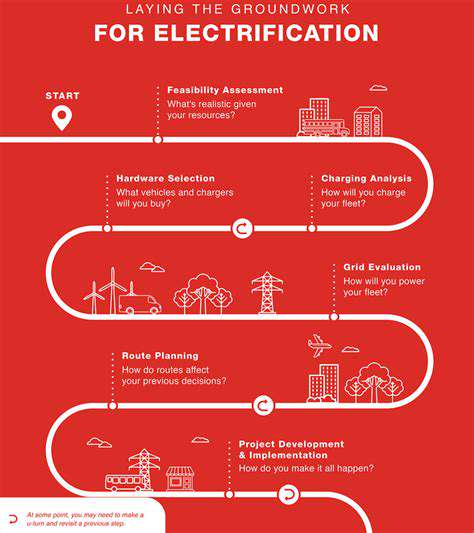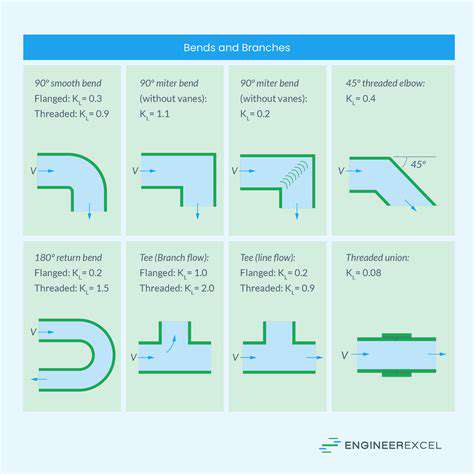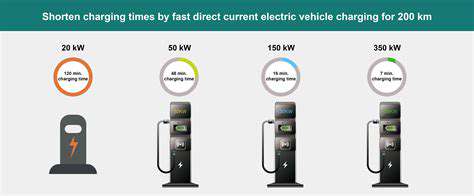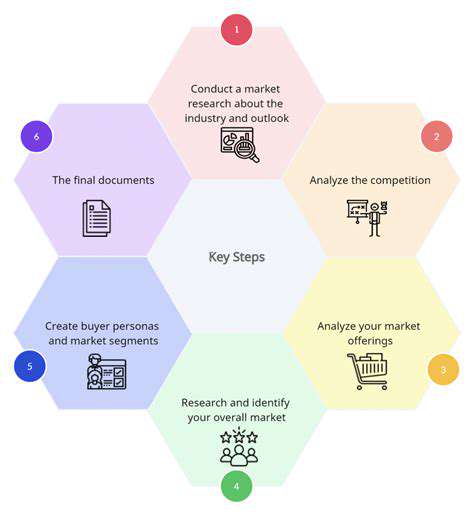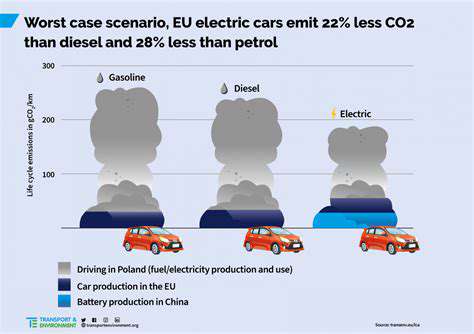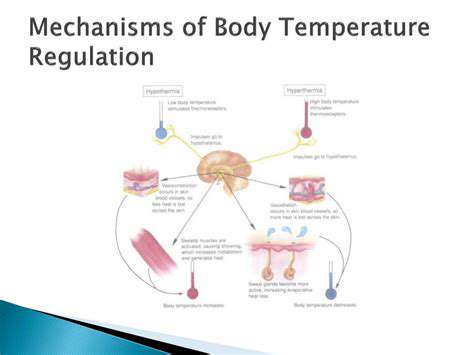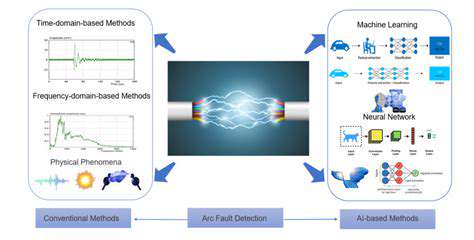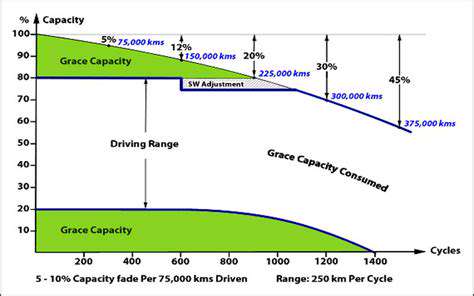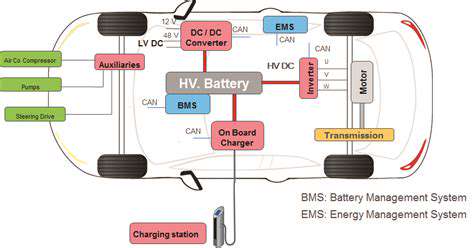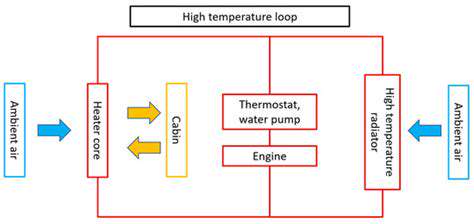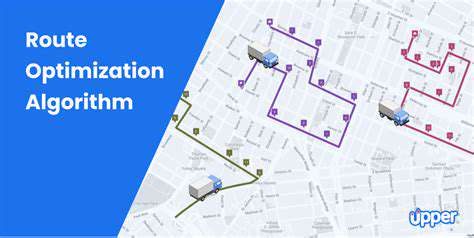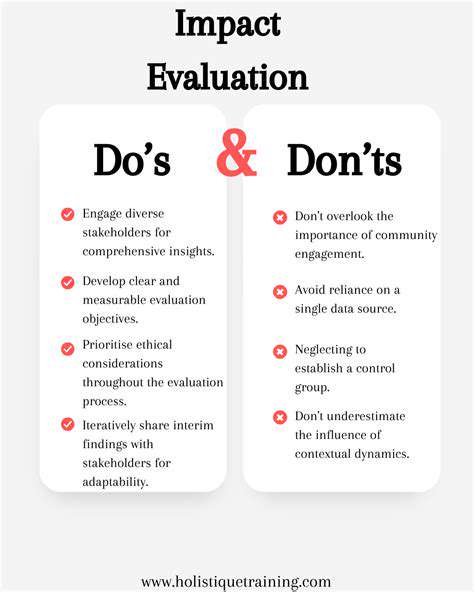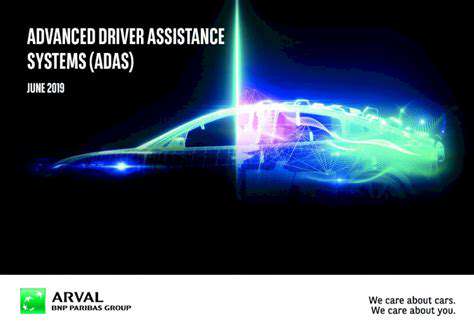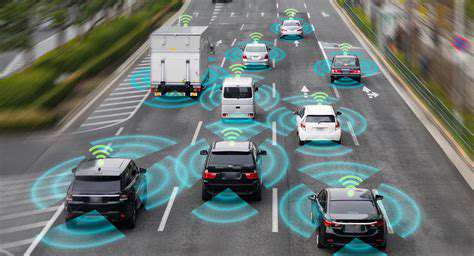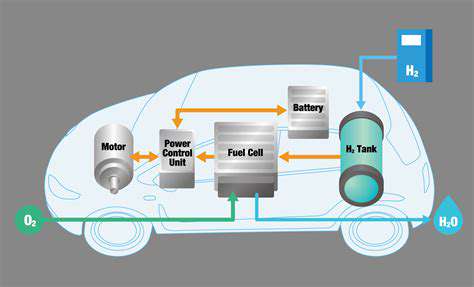This site delivers up-to-date analysis and detailed information on electric vehicles, focusing on battery technology, charging infrastructure, vehicle comparisons, and the future of sustainable transportation. We provide expert insights into the latest EV models, technological advancements, and policy changes shaping the industry.
Best Long Distance Electric Cars for Cross Country Trips
May 02, 2025
How Toyota is Adapting to the EV Revolution
May 02, 2025
Exploring High Voltage Fast Charging Systems
May 02, 2025
Tesla vs. BYD: Comparing the Leading EV Giants
May 02, 2025
The Role of EVs in Sustainable Urban Mobility
May 02, 2025
How NIO is Revolutionizing Battery Swap Technology
May 01, 2025
Key Differences Between Rivian and Lucid Motors
Apr 30, 2025
The Importance of Thermal Management in EV Batteries
Apr 30, 2025
Exploring Multi Motor Configurations in Electric SUVs
Apr 30, 2025
How AI Improves Battery Management Systems in EVs
Apr 30, 2025
1. Compressor: The heart of the heat pump, the compressor is driven by electricity. It compresses refrigerant gas, raising its temperature and pressure, which is crucial for the heat exchange process.2. Evaporator: This component absorbs heat from the outside environment or the vehicle’s interior. In heating mode, the refrigerant evaporates, creating a cooling effect, while it condenses to release heat in cooling mode.3. Condenser: Responsible for releasing heat, the condenser transfers the heat from the refrigerant into the vehicle's cabin. The efficient operation here is vital for maintaining a comfortable temperature inside the EV.4. Expansion Valve: This component regulates the flow of refrigerant into the evaporator. By reducing the pressure of the refrigerant, it allows the refrigerant to absorb heat effectively. Benefits of Heat Pump Technology in EVsThe integration of heat pumps in electric vehicles offers multiple advantages:- Energy Efficiency: Heat pumps can be up to three times more efficient than traditional electric resistance heaters, especially in moderately cold conditions, extending the driving range of the EV by conserving battery power.- Environmental Friendliness: By using electricity instead of fossil fuels, heat pumps contribute to reduced carbon emissions, aligning with the overall mission of electric vehicles to minimize environmental impact.- Versatility: Heat pumps provide both heating and cooling solutions, making them suitable for year-round use, ensuring passenger comfort regardless of weather conditions.- Cost-Efficiency: The enhanced efficiency of heat pumps can lead to lower energy costs over time, making them a financially sensible choice for EV owners. ConclusionAs electric vehicles continue to gain popularity, understanding the technology that powers them is crucial. Heat pump systems exemplify the innovation driving these vehicles forward, offering efficient, environmentally friendly solutions for climate control. By incorporating heat pumps, EV manufacturers are not only enhancing performance but also contributing to a more sustainable future. For more insights on electric vehicles and their cutting-edge technologies, stay tuned to our blog!Explore the benefits of heat pump technology in electric vehicles and join the movement towards a more sustainable automotive industry. Consider making the switch to an electric vehicle today!
Apr 30, 2025
The Role of Silicon Carbide in Enhancing EV Efficiency
Apr 30, 2025
Benefits of Over the Air Software Updates in EVs
Apr 29, 2025
How Integrated Electric Drive Systems Improve Efficiency
Apr 29, 2025
The Impact of Autonomous Driving on Traffic Efficiency
Apr 29, 2025
Top EV Models Equipped with Advanced Driver Assistance
Apr 29, 2025
Pioneering Technology, Legislation, and Consumer Acceptance IntroductionThe rise of autonomous electric vehicles (EVs) is transforming the automotive landscape, driven by groundbreaking technological advances and evolving legislation. Emerging technologies such as advanced sensors, machine learning algorithms, and V2X communication systems are enabling safe and efficient navigation, laying the groundwork for a revolution in transportation. This comprehensive analysis explores the multifaceted aspects of AV technology, ranging from key components and regulatory challenges to consumer perception and environmental impact. Key Components of Autonomous DrivingAt the core of autonomous vehicles lies an intricate combination of technologies that allows them to operate autonomously. Advanced sensors, including computer vision and LiDAR, map the vehicle's surroundings, optimizing decision-making through machine learning algorithms. This synergy fosters a real-time understanding of the environment, paving the way for smoother and safer interactions on public roads. Research and Development TrendsInvestment trends in AV technology are on the rise, with a reported increase of 30% in funding over the last year alone. Major tech companies and automotive manufacturers are collaborating to enhance AV technologies, while universities contribute innovative research. However, as technology evolves, so does the need for comprehensive safety standards—there's a critical push for clear regulatory guidelines that encompass testing protocols and liability frameworks. Legislation and Regulatory FrameworksThe global landscape of AV legislation is complex, with different nations taking varied approaches. The U.S. grapples with a patchwork of state regulations, while the European Union works on cohesive policies. Prominent regulatory bodies, such as the NHTSA and the European Commission, are shaping guidelines that ensure safety and consumer protection while balacing progressive innovation. Consumer Perception and AcceptancePublic perception is pivotal to the adoption of fully autonomous EVs. While interest in EV technology is growing, skepticism around safety and reliability persists. Recent surveys reveal that consumers often feel a lack of trust in the technology's capabilities. Manufacturers must prioritize education and transparent communication regarding safety measures to build confidence and encourage acceptance. Environmental ImpactA shift toward fully autonomous EVs can lead to a significant reduction in greenhouse gas emissions and improved urban planning. Studies indicate that this technology can decrease emissions and reshape city landscapes by reducing parking requirements and enhancing traffic flow. However, challenges remain in managing the environmental impact of battery production and disposal, necessitating effective recycling programs and responsible resource management. Challenges and Opportunities AheadWhile the path toward widespread adoption of autonomous EVs is fraught with challenges, opportunities for innovation abound. The future will hinge on overcoming infrastructure hurdles, enhancing consumer trust, and emphasizing sustainability in production processes. With growing market competition and insights from real-world applications, the road ahead for autonomous electric vehicles is set for transformative growth. ConclusionThe integration of technological advancements, legislative support, and public acceptance will dictate the success of autonomous EVs. As stakeholders navigate this evolving landscape, collaborative efforts and a commitment to sustainability will shape the future of transportation, positioning autonomous electric vehicles as a cornerstone of modern mobility.
Apr 23, 2025
The Technology Behind ItLevel 3 Autonomy, recognized as conditional automation, represents a significant leap in the realm of autonomous vehicles. This advanced technology allows vehicles to handle the majority of driving tasks under specified conditions without requiring constant attention from the driver. Unlike Level 2 vehicles, where the driver must remain actively engaged, Level 3 vehicles are capable of managing tasks such as navigation and traffic handling once certain criteria are met. The Society of Automotive Engineers defines Level 3 autonomy as the stage where drivers can safely disengage from control but must be ready to intervene when necessary. The Role of AI in Level 3 VehiclesArtificial Intelligence (AI) is crucial in facilitating Level 3 autonomy. Through sophisticated machine learning algorithms, these vehicles interpret vast amounts of sensory data, allowing them to spot obstacles, read traffic signals, and render safe driving decisions. The proactive use of AI algorithms has demonstrated significant improvements in safety; for example, a report from the National Highway Traffic Safety Administration highlighted a reduction in accident rates thanks to AI-driven predictive capabilities. Safety Features and MechanismsSafety is paramount for Level 3 systems, which come equipped with advanced safety features such as emergency braking and collision avoidance systems. These technologies ensure L3 vehicles can respond to unforeseen events, minimizing accident risks. Furthermore, fail-safe mechanisms, including alerts for conditions beyond the vehicle's operational design domain, bolster public trust as these vehicles become commonplace. Current Challenges for Level 3 AutonomyEven with technological advancements, the rollout of Level 3 autonomy faces hurdles, including discrepancies in traffic regulations across different jurisdictions and liability concerns in the event of accidents. These issues must be addressed to pave the way for acceptance and seamless integration of autonomous vehicles within existing road networks. The Future of Level 3 Autonomous VehiclesThe trajectory for Level 3 vehicles is promising, with advancements in AI, integrated safety systems, and user-friendly interfaces expected to shape the future of road travel. As manufacturers continue to invest in research and development, we anticipate a transition to higher levels of autonomy, including potential Level 4 systems capable of operation in controlled environments.--- Reducing Human Error: A Key to Enhanced SafetyWith human error contributing to approximately 94% of road accidents, Level 3 autonomous vehicles offer a robust solution by effectively managing safety-critical functions. This capability significantly reduces human-related lapses, increasing the safety of all road users. Impact on Driver BehaviorThe introduction of Level 3 technology could positively influence driver behavior, promoting habits like reduced speeding and increased attention to road safety. As public perception shifts and as people become accustomed to relying on automation, we can envision a safer driving culture emerging. Regulatory Challenges and ConsiderationsThe deployment of Level 3 vehicles necessitates new regulatory frameworks to address emerging issues, ensuring that safety protocols evolve alongside technology. Collaboration among manufacturers, regulatory authorities, and urban planners will be vital in creating a safer, smart transportation ecosystem. ConclusionThe future of Level 3 autonomous vehicles promises enhanced road safety, improved traffic flow, and potential reductions in congestion. With ongoing investment in technology and public education, it's crucial to build a foundation for the successful adoption of these transformative vehicles, paving the way for a safer and more efficient driving experience.
Apr 21, 2025
Environmental Benefits of Hydrogen Fuel CellsHydrogen fuel cells offer a range of environmental benefits that are pivotal for sustainable transportation. By utilizing hydrogen as a primary fuel source, these cells produce only water as a byproduct, drastically reducing greenhouse gas emissions. According to the International Energy Agency, transitioning to hydrogen could cut global CO2 emissions by up to 34% by 2050. This clean energy alternative is essential in the quest to combat climate change and enhance air quality, particularly in industries such as transportation and heavy manufacturing. Key Advantages1. Reduction of Greenhouse Gas Emissions - The transition to hydrogen can significantly lower carbon footprints across major industries. Hydrogen fuel cells present a clean solution, especially in sectors where conventional electrification presents challenges. 2. Enhanced Energy Efficiency - Hydrogen fuel cells boast an impressive energy conversion efficiency of over 60%, far exceeding traditional combustion engines, which operate at only 20-30%. This efficiency leads to reduced energy wastage and lower emissions.3. Economic Opportunities - Investment in hydrogen technology creates numerous job opportunities in engineering, manufacturing, and maintenance sectors, especially as nations move toward green energy solutions. Local industries can thrive as demand for hydrogen production and infrastructure grows. Technological AdvancementsInnovations in fuel cell technology are making hydrogen vehicles increasingly viable. With auto manufacturers investing in research, new materials and designs are enhancing fuel cell efficiency and reducing costs. As of 2023, countries like Germany have initiated extensive hydrogen refueling networks, making it easier for consumers to embrace this technology. The Environmental Impact of Hydrogen VehiclesHydrogen vehicles produce zero tailpipe emissions, which is crucial for improving urban air quality. However, sustainable practices in hydrogen production are necessary to maximize these environmental benefits. Renewable hydrogen production methods, powered by sources like solar and wind, are vital for ensuring a minimal carbon footprint. Challenges and Future OutlookDespite the numerous environmental benefits, hydrogen fuel cells face challenges, including high production costs and infrastructure limitations. Creating a robust network of refueling stations is essential for wider adoption. Public perception and understanding of hydrogen technology also play a crucial role in its market acceptance.The future of hydrogen fuel cells looks promising, with market forecasts predicting significant growth. By 2030, hydrogen vehicles could comprise up to 25% of the automotive market, fueled by ongoing advancements and increased consumer awareness. Collaborative initiatives among governments, industries, and research institutions are vital to overcoming current hurdles.---For further insights into the role of hydrogen in sustainable mobility and how it is shaping environmental policies, [read our comprehensive guide](your-link-here).
Apr 20, 2025
Hot Recommendations
- The Benefits of Centralized Data Platforms in Supply Chain Optimization
- Predictive logistics: Anticipating and resolving issues proactively
- From Legacy Systems to Modern Data Platforms: The Migration Journey
- The Role of Data Scientists in a Tech Driven Supply Chain
- The Future of Human Robot Collaboration in Logistics
- 5G for real time collaboration platforms for global supply chains
- The Role of Data Lakes in Modern Supply Chain Architectures
- The Rise of Drones for Warehouse Inventory Audits
- 5G for enabling real time remote control of logistics drones
- Building a Transparent Supply Chain Ecosystem
